The 5 Best Grasses for Central Texas Lawns
BY ABDUL WADOOD | MAY 2ND, 2023 | LAWN CARE, TEXASCentral Texas is hot, dry, and sunny most of the year — not ideal conditions for growing a beautiful lawn. But while many homeowners here have gone the xeriscape route, know that it IS possible to have a lush, green lawn.
Fortunately, many grasses have adapted to our famously arid climate. So if you’re looking to plant a new lawn, consider these options and then be sure to provide the care it needs to thrive in these challenging conditions.
In this article:
Best Grasses for Central Texas
Before diving deeper, here’s a quick overlook of the two primary types of grasses.
- Warm-season grasses grow best when the temperature is between 75 and 95 degrees Fahrenheit.
- Cool-season grasses grow best when temperatures range from 55 to 75 degrees Fahrenheit.
Central Texas has a humid subtropical climate, meaning the summers are long and hot, while the winters are short and cold. Sometimes, the region experiences windy, wet winters.
Drought- and heat-tolerant grasses perform best in Central Texas, so, we recommend you choose warm-season grasses. Here’s a list of the best warm-season grass types.
1. Zoysiagrass
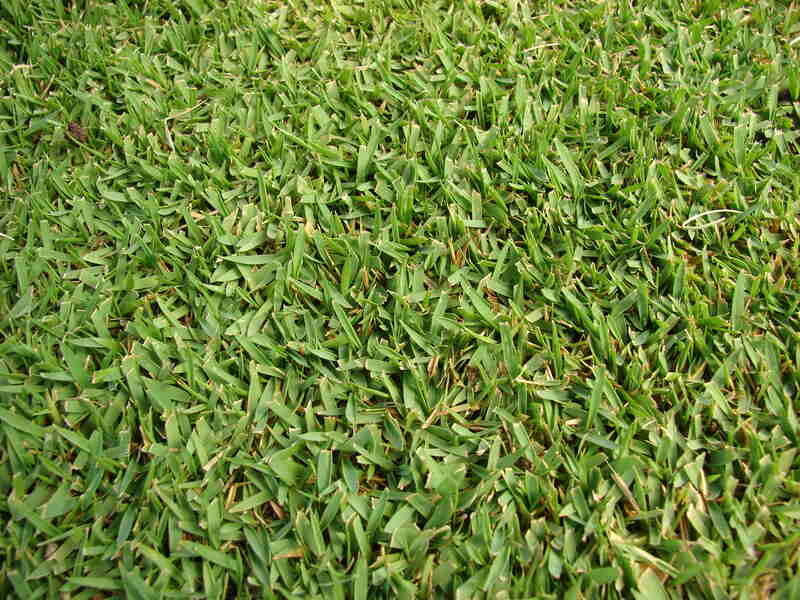
Photo Credit: Forest & Kim Starr / Wikimedia Commons / CC BY-SA 3.0
With its green, medium-coarse blades, Zoysiagrass is an attractive option. It’s durable but takes time to recover from damage. Zoysiagrass has an extensive root system, making it tolerant to drought and shade.
While it’s popular throughout Texas, Zoysiagrass is on the expensive side because it’s both hardy and requires little maintenance. It needs little fertilization and can resist diseases and insects. Zoysiagrass can take a long time to spread and form dense turf, but it grows quicker under full sun.
- Classification: Warm-season grass
- Spreads by: Rhizomes and stolons
- Shade tolerance: Moderate
- Drought tolerance: Moderate
- Foot traffic tolerance: High, but it takes time to recover from damage
- Maintenance needs: Low fertilizer requirements. It’s prone to thatch build-up.
- Mowing height: 1 to 2 inches
- Potential for disease: Low
2. Bermudagrass
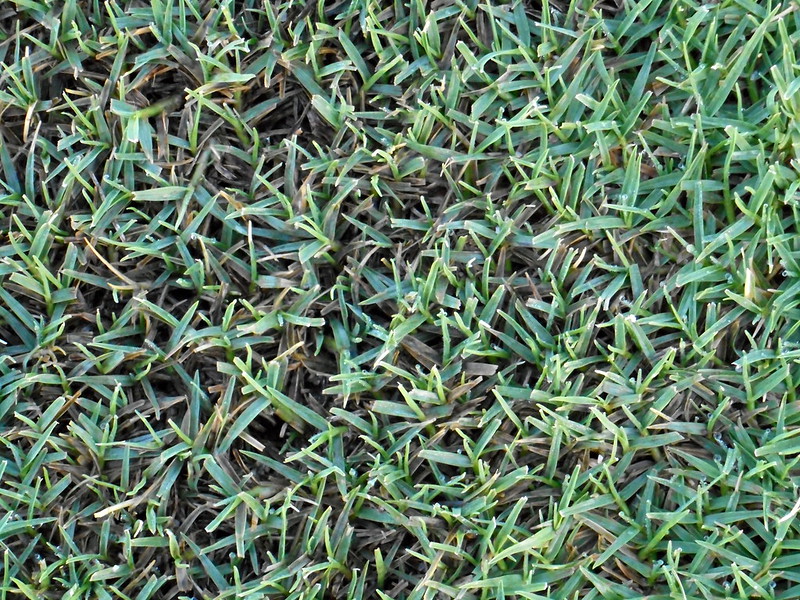
Photo Credit: Scot Nelson / Flickr / CC0 1.0
Bermudagrass grows fast and has a beautiful dark-green appearance. It’s highly durable and quickly recovers from damage. In fact, you can even find Bermudagrass on football fields.
Bermudagrass grows best in full sun and can tolerate drought. It will go dormant when it’s too cold, which is rare in Central Texas. On the downside, Bermudagrass is high-maintenance. It requires frequent mowing and fertilization.
- Classification: Warm-season grass
- Spreads by: Rhizomes and stolons
- Shade tolerance: Low
- Drought tolerance: High
- Foot traffic tolerance: High
- Maintenance needs: Develops thatch easily, needs regular fertilization and mowing
- Mowing height: 1 to 2 inches
- Potential for disease: Resists diseases well but not insects.
3. St. Augustinegrass
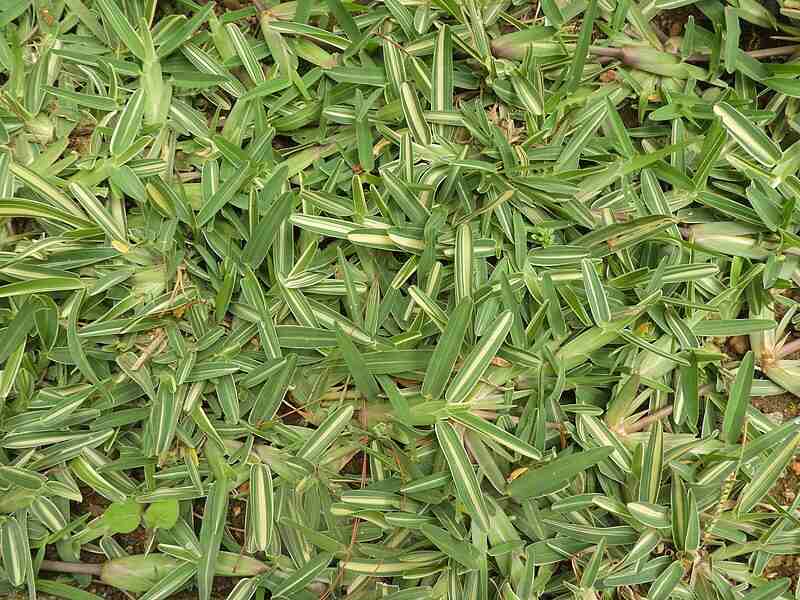
Photo Credit: Yercaud-elango / Wikimedia Commons / CC BY-SA 4.0
St. Augustinegrass is one of the best grasses for Central Texas. It has a gorgeous appearance with broad, dark green grass blades. St. Augustinegrass tolerates cold better than Bermudagrass and Zoysiagrass, but, it goes dormant when soil temperatures go below 55 degrees Fahrenheit.
If you have a bunch of trees on your lawn, St. Augustinegrass is a great option, as it does just fine in the shade. It tolerates drought, too. St. Augustinegrass grows fast, but that also means it requires frequent mowing.
Unfortunately, this species doesn’t tolerate high foot traffic, so, if you plan to use your lawn heavily, we recommend you avoid this grass.
- Classification: Warm-season grass
- Spreads by: Stolons
- Shade tolerance: High
- Drought tolerance: Moderate
- Foot traffic tolerance: Low
- Maintenance needs: Develops thatch easily, needs regular fertilization and mowing
- Mowing height: 2.5 to 3.5 inches
- Potential for disease: Moderate
4. Centipedegrass
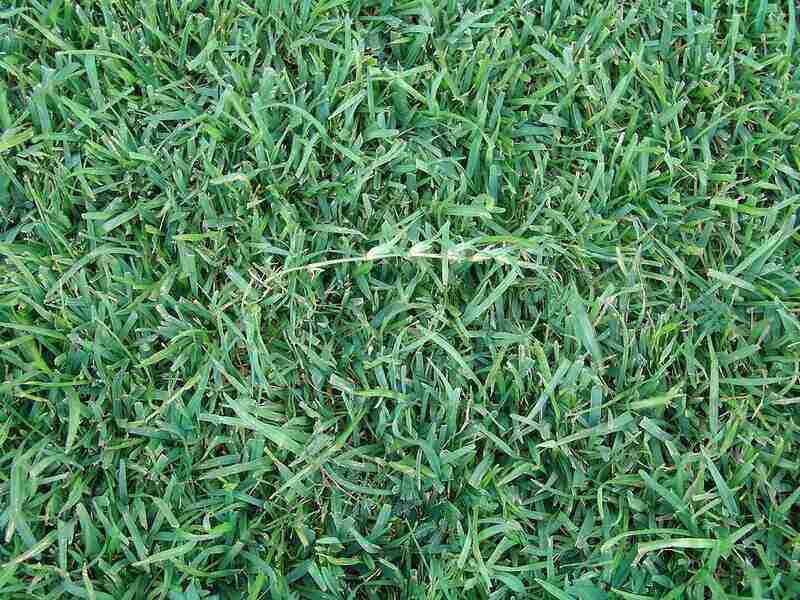
Photo Credit: James Becwar / Wikimedia Commons / CC0 1.0
Centipedegrass has green, medium-textured grass blades. It grows slowly but forms a dense lawn once established. This turf grows best under full sun but also tolerates shade and drought.
Centipedegrass can resist diseases and doesn’t require much maintenance. It has a shallow root system, making it unsuitable for saline soils. Centipedegrass can handle kids and pets playing in your yard but not really heavy foot traffic.
- Classification: Warm-season grass
- Spreads by: Stolons
- Shade tolerance: Moderate
- Drought tolerance: Moderate
- Foot traffic tolerance: Low
- Maintenance needs: Moderate
- Mowing height: 1 to 2 inches
- Potential for disease: Moderate
5. Buffalograss
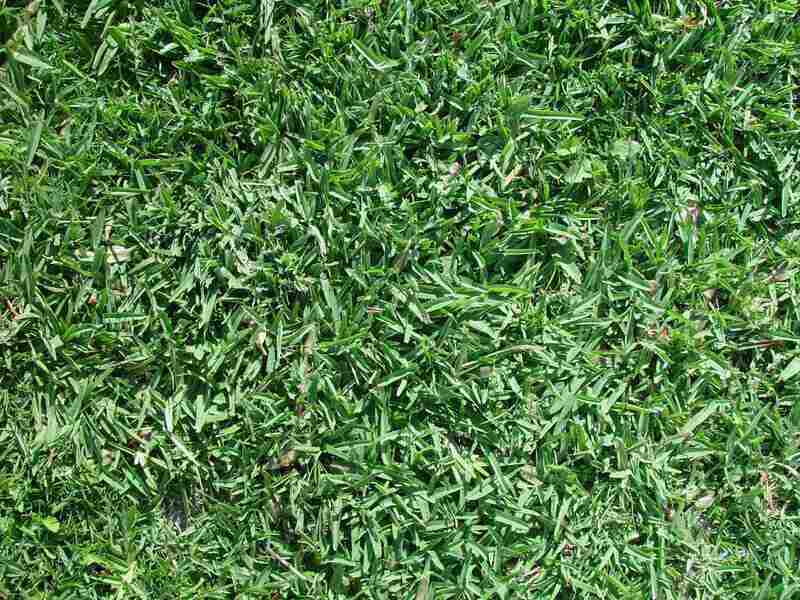
Photo Credit: Pixnio
Buffalograss is popular with homeowners across Central Texas. Much of its appeal owes to the fact that it’s soft to walk on, thanks to its fine-textured grass blades, but it doesn’t tolerate high foot traffic. Buffalograss grows best in full sun and doesn’t require frequent watering. Overwatering invites weeds.
Buffalograss is a low-maintenance turf that grows in almost all soil types. It also resists diseases and insects.
- Classification: Warm-season grass
- Spreads by: Stolons
- Shade tolerance: Low
- Drought tolerance: High
- Foot traffic tolerance: Low
- Maintenance needs: Low mowing and fertilizer needs. Develops thatch easily.
- Mowing height: 2 to 3 inches
- Potential for disease: Low
Best Grasses at a Glance
| Warm-Season Grasses | Spreads By | Shade Tolerance | Drought Tolerance | Maintenance Needs | Disease Resistance |
| Zoysiagrass | Rhizomes and stolons | Moderate | Moderate | Moderate | Low |
| Bermudagrass | Rhizomes and stolons | Low | High | High | Moderate |
| St. Augustinegrass | Stolons | High | Moderate | High | Moderate |
| Centipedegrass | Stolons | Moderate | Moderate | Moderate | Moderate |
| Buffalograss | Stolons | Low | High | Moderate | Low |
FAQs
St. Augustinegrass does really well in the shade.
If you plan to use your lawn heavily, go for Bermudagrass. Zoysiagrass also tolerates heavy traffic, but it takes time to recover when damaged.
If you want a low-maintenance lawn, Zoysiagrass and buffalograss are the best options.
Bermudagrass and buffalograss have the best tolerance to drought.
The Final Word
Central Texas experiences dry, hot weather for most of the year, so, you won’t go wrong choosing any of these warm-season grasses. It’s important, also, to pick a grass type that best suits your lifestyle.
What’s next after choosing the correct grass? Select the best native plants. Proper maintenance is also essential to enjoy a healthy lawn year-round.
If you want a gorgeous lawn but don’t have the time to spend on it, Wikilawn’s Central Texas lawn care pros can help.
Main Image Credit: Tarleton State University, Central Texas / Jzbale / Wikimedia Commons / CC BY-SA 3.0